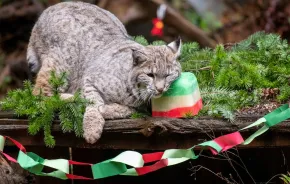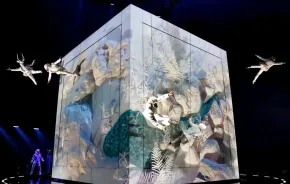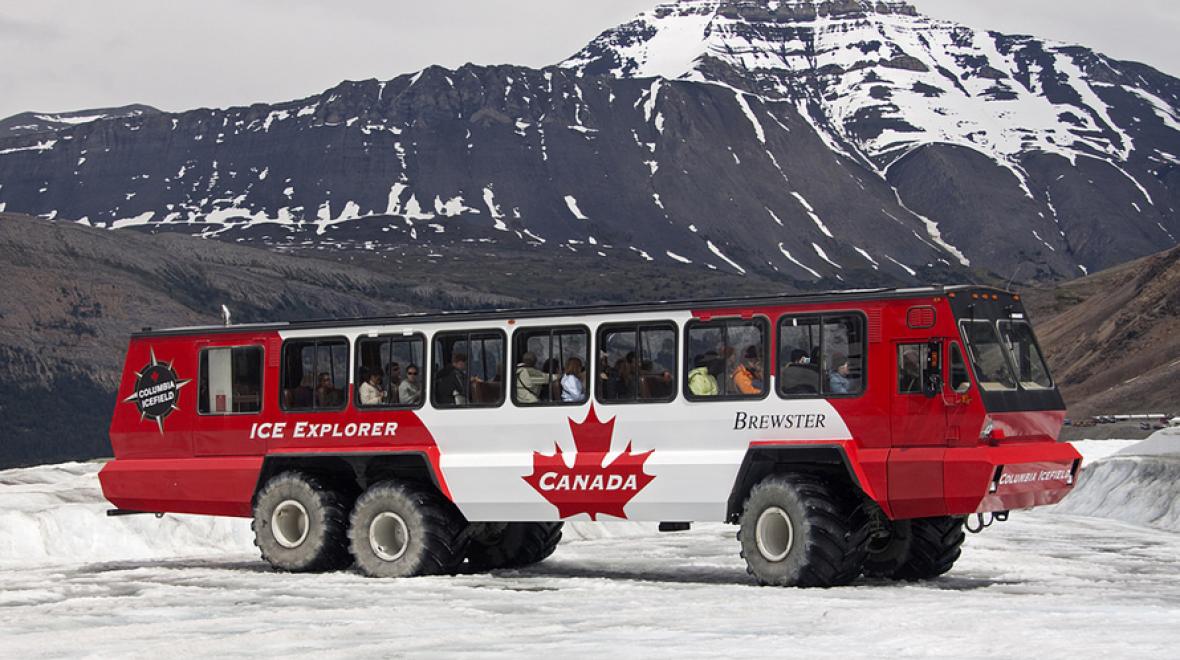
Photo:
Athabasca Glacier in Jasper | Credit: Marilyn Peddle, Flickr CC
Jasper, Banff, Yoho, Glacier: Western Canada’s national parks showcase some of the most iconic snow-marbled peaks, steamy hot springs and lush valleys on earth. And this is the year to explore them.
Canada celebrates its 150th birthday this year by inviting adventure lovers everywhere to visit its diverse and scenic national parks — for free. An annual all-access Discovery Pass (usually $136 CAN) will provide your whole family or group admission to all Parks Canada places (39 national parks and eight national park reserves) through Dec 31, 2017. Get your free pass online at here.
Here are our suggestions for three kid-friendly adventure trips within a day’s drive from Seattle that’ll have you and your kids trekking across the top of a massive glacier, soaking up the spray of a cool waterfall and listening for the high-pitched bugle of an elk. Each trip can be done in three to four days, or combined for a longer vacation. Note: All prices listed are in Canadian dollars.
1. Mount Revelstoke and Glacier National Parks
Unique features: A famous scenic drive packed with hairpin turns, hiking trails through misty blooming meadows
Where it’s at: These side-by-side parks are just miles from each other in the Selkirk Mountains, set right along the Trans-Canada Hwy about 2.5 hours east of Kamloops and 7.5 hours from Seattle.
Best time to visit: July through September, peak wildflowers in August
Kids will love: An easy boardwalk stroll devoted to the fragrant, swamp-loving skunk cabbage
Plan your trip: pc.gc.ca/glacier; 250-837-7500
The Selkirks (part of the Columbia Range) may be difficult to distinguish from the Canadian Rockies on a topographic map, and the scenery is no less grand than the more famous range to their east. Yet the wetter climate, lush vegetation and overall gestalt of Revelstoke and Glacier National Parks conjure the backcountry landscapes of our beloved Pacific Northwest.
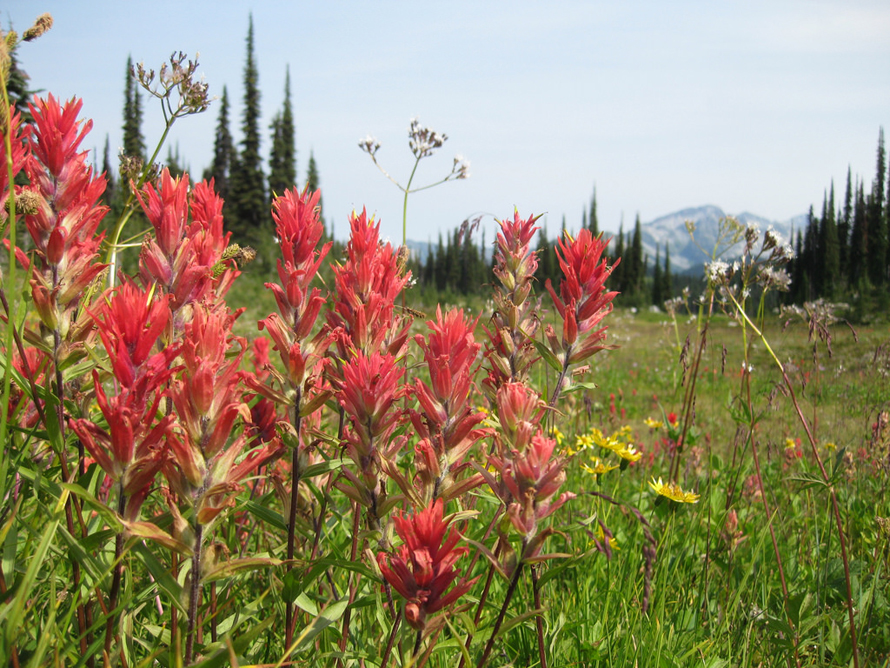
Mt. Revelstoke National Park
Fill the tank and clean the windshield — this visit starts with a jaw-dropping scenic drive that zig-zags up 16 switchbacks in as many miles to the summit of Mount Revelstoke, the easiest peak to bag in British Columbia. As you ascend the 16 kilometers of all-paved road up the Meadows in the Sky Parkway, verdant conifer woods give way to subalpine flower meadows. The road ends for visitors at the Balsam Lake parking lot, where several hiking trails depart in all directions. Reach the Mt. Revelstoke summit via a 1-kilometer stroll from here, or hop on a park shuttle bus to the viewpoint (it departs a few times per hour).
If your kids are up for a real hike, set out for a half-day jaunt on the Eva Lake Trail (12 kilometers round trip, scant elevation gain) through avalanche fields littered with massive boulders (listen for the whistling marmots!) and gentle slopes covered in a rainbow of blooms.
Between Revelstoke and Glacier on Hwy 1 sit a few kid-friendly boardwalk trails that deliver a quick dose of nature. Try the Skunk Cabbage Boardwalk Trail (1.3 kilometers) for a close-up view (and whiff) of a funky wetland garden, or the Giant Cedars Boardwalk Trail (480 meters) through a forest more than 500 years old.
Glacier National Park
Named for the 422 sheets of ice that forms its dominant landscape and sculpts its rugged valleys, Glacier is craggy terrain and much loved by serious climbers, though the 140 kilometers of mostly well-maintained trails that crisscross its peaks and valleys beckon hikers as well. The Trans-Canada Highway bisects the park and offers access to the Rogers Pass Discovery Visitor Centre (featuring great exhibits about the geology and history of the park), campgrounds and trailheads. The park’s largest ice sheet, the Illecillewaet Glacier, can be spotted from the highway.
Short and easy, the Hemlock Grove Boardwalk (400 meters) is stroller accessible and wends through a stand of ancient conifers. Another flat path to explore is the Abandoned Rails Trail, which follows old rail beds to abandoned pioneer snowsheds, offering signage with interesting tidbits of history about the 1910 Rogers Pass avalanche along the way.
Stay: Book a lodge room or family-sized cabin at the Glacier House Hotel & Resort, just north of the town of Revelstoke. The spacious cabins have fireplaces and outdoor hot tubs, and the lodge has an indoor pool and free continental breakfast each morning. Rates start at $129 CAN for lodge rooms, or $175 for cabins (250-837-9594). More accommodations can be found in town; within the park boundaries however is just one hotel, the Best Western Glacier Park Lodge at Rogers Pass.
Camp: Glacier has three campgrounds along the highway, the largest and least primitive being Illecillewaet Campground, situated in a hemlock forest along a glacier-fed stream (60 campsites, restrooms but no showers, no RV hookups, no reservations, $21.50 nightly).
Detour: Twenty minutes west of Revelstoke is a childhood wonderland called The Enchanted Forest, a magical theme park in the woods with a giant treehouse to explore, fairies to befriend and castles to climb on. Open daily through mid-October, admission is $12 for adults, $9 for children, and babies and toddlers are free.
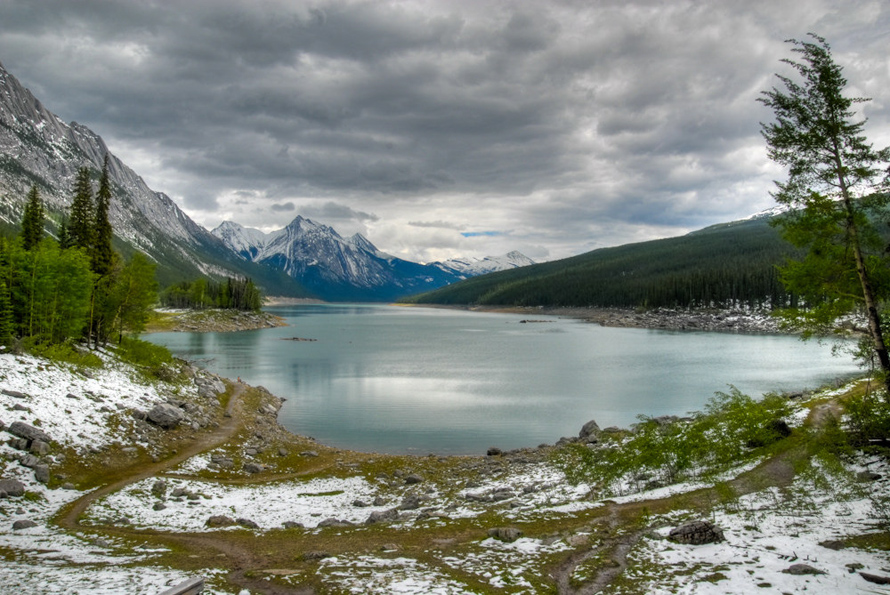
2. Jasper National Park
Unique features: ice fields, a glacier you can walk on, deep wilderness
Where it’s at: In the heart of the Canadian Rockies northwest of Banff, about a 12-hour drive from Seattle
Best time to visit: July through September
Kids will love: Stepping out onto the surface of a real, massive glacier
Offbeat adventure: Ride the Jasper SkyTram that soars through the sky to panoramic views of the parks’ snow-streaked crags
Plan your trip: pc.gc.ca/jasper; 819-420-9486
If Jasper National Park were to be described in just one word, it would be dramatic. Its peaks are the prettiest, its glaciers the most massive, its limestone canyons the most spectacular, its alpine lakes the finest hue of jade... a visit here will have you using up superlatives as fast as space on your digital camera.
The hub: Jasper townsite is an old railway stop that sits in the park’s center and is a thriving hub of activity in summer months, yet boasts a distinctly laid-back vibe from the resort town of Banff. You won’t find a Starbucks here, but you will enjoy locally owned restaurants, unpretentious coffee shops and walkable streets backdropped by towering mountains.
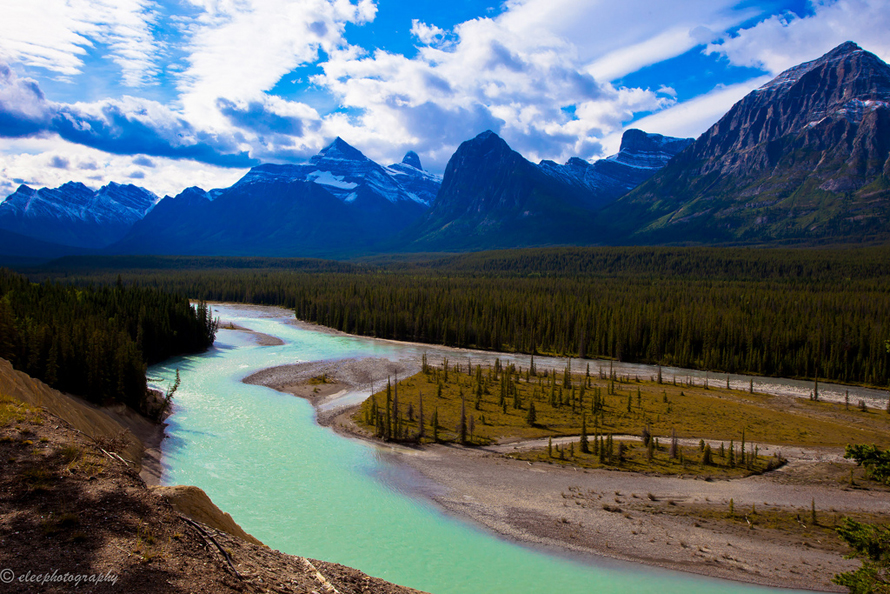
The ultimate scenic drive: The Ice Fields Parkway (Hwy 93) is one of the greatest scenic drives on earth. The route parallels the Continental Divide, connecting the Jasper townsite on its north end to Banff National Park’s Lake Louise on its south end, winding around dozens of icy glaciers, waterfalls that tumble off rock spires and azure mountain lakes.
Gas up before you leave Jasper and plan to take your time — there are many stops along the way. From Jasper, it’s about 100 kilometers to the Athabasca Glacier and the Columbia Icefields, a perfect turn-around spot. Stop highlights include Athabasca Falls (30 kilometers south of Jasper), a short accessible trail leads to several lookout platforms, including Goat Lick (37 kilometers), a reliable roadside wildlife viewing spot; and Columbia Icefield (103 kilometers), a massive sheet of ice that is the northern hemisphere’s largest glacial area outside the Arctic Circle. The ice field feeds 30 glaciers around its edges, including the huge Athabasca Glacier.
But instead of walking on the glacier (which can be dangerous), book a spot on the mega-tire sno-coach bus, which offers a once-in-a-lifetime chance to get out and safely explore the otherwordly surface of a glacier.
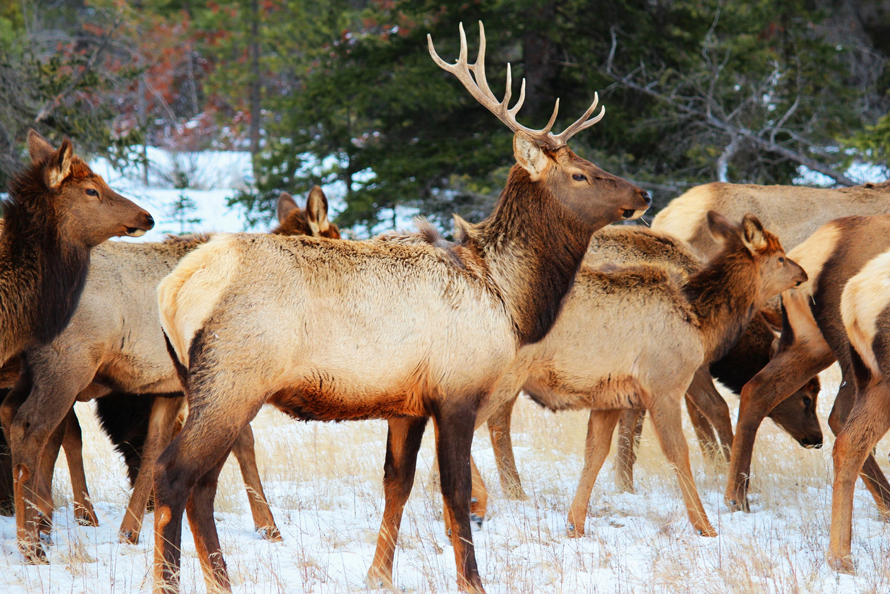
More to explore: Just east of Jasper townsite is a must-do hike with kids, the Maligne Canyon Trail (an easy 30-minute loop), which leads explorers through a deep limestone gorge carved by centuries of powerful water. Take the Maligne Tour, a 90-minute guided boat cruise to Spirit Island that is rich in scenery and history.
Stay: The park’s top luxury hotel is Fairmont Jasper Park Lodge, a sprawling mountain resort on Lac Beauvert with deluxe lodge rooms and cedar log cabins (from $240). A more affordable choice is Bear Hill Lodge, with chalet rooms and cute log bungalows (from $170).
Camp: Wabasso Campground (turnoff is 6 kilometers south of Jasper) is one of a handful of campgrounds along the Ice Fields Parkway, and offers a bit more peace and quiet than the enormous Whistlers Campground closer to town (60 campsites, restrooms but no showers, electrical hookups for small RVs, $21.50 nightly, reservations at 877-737-3783 or reservation.pc.gc.ca)
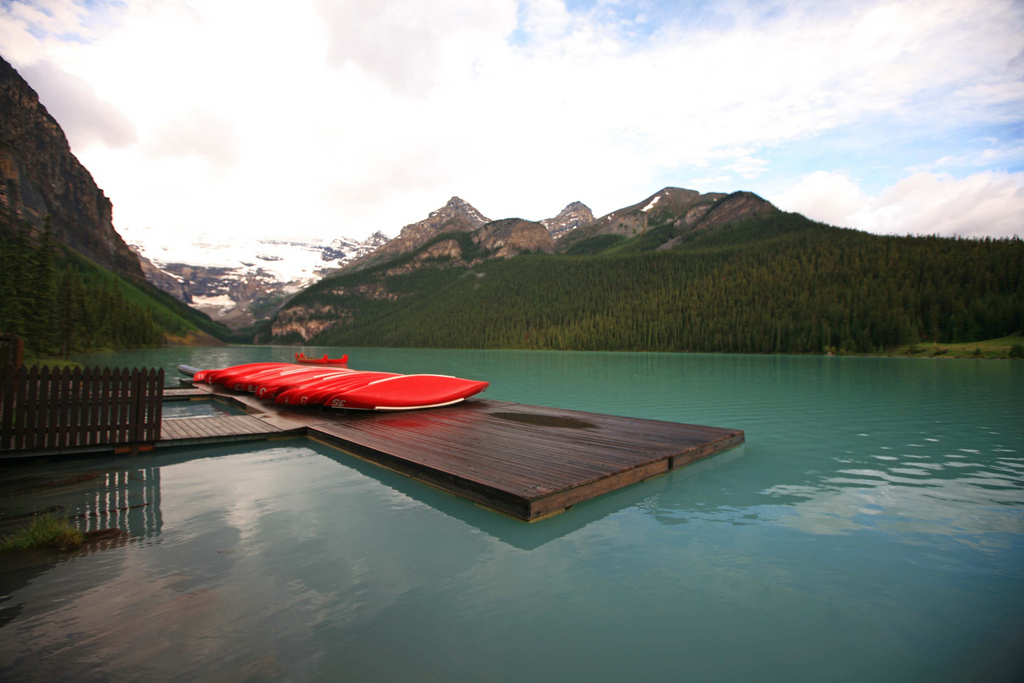
3. Banff and Yoho National Parks
Unique features: turquoise lakes, cool geology, plunging waterfalls, soak-worthy hot springs, miles of hiking trails
Kids will love: A gentle float trip down the Bow River in Banff, or an exciting whitewater raft ride on the Kicking Horse River
Offbeat adventure: high tea at the top of the Lake Agnes Trail
Best time to visit: June through September
Where it’s at: The parks border one another and together they straddle the Continental Divide in the heart of the Canadian Rockies. The drive to the westernmost park, Yoho, is about 10 hours from Seattle.
Plan your trip: pc.gc.ca/banff; 403-762-1550
Lush green meadows, pounding cascades, steep-faced peaks and sublime lake views … Banff National Park is a world-famous outdoor playground and the Canadian Rockies’ most popular destination for a reason. The amazing Lake Louise and Moraine Lake area, super scenic Bow Parkway and immense Valley of the Ten Peaks are all bucket list material. Solitude can be hard to find in the park’s well-trodden hot spots, but you can still find secluded trails of its sister park next door. You can stretch your scenic adventure to the north with a visit to Jasper National Park or to the south where Kootenay National Park is home to the much-loved Radium Hot Springs.
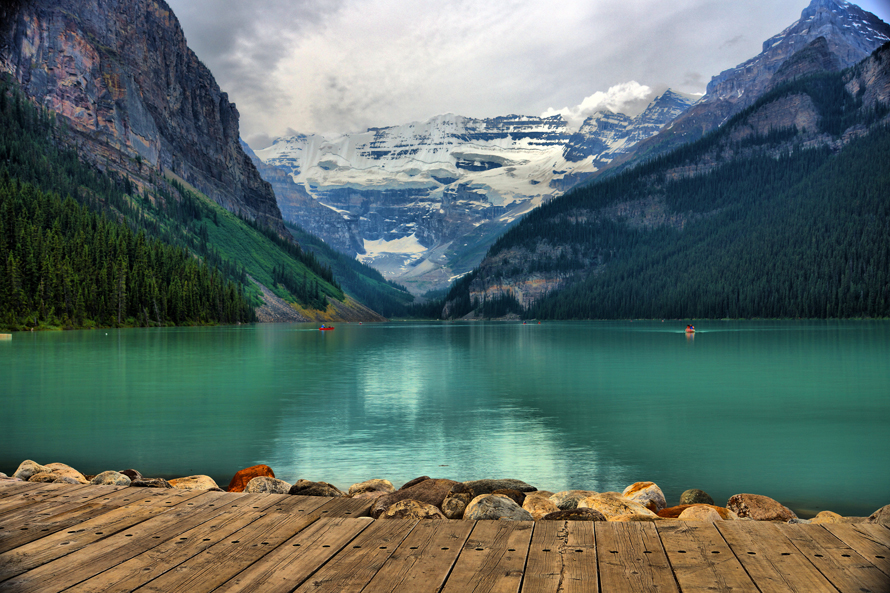
Banff National Park
Banff is a sprawling expanse of Rocky Mountain glory, and its 1600 kilometers of trails are pummeled with the boots of about three million visitors per year. Fortunately for the wolves, grizzlies, elk, cougars, owls, warblers (and you!), most of those folks gather in just a few corners of the park. Tip: Explore the hot spots early in the morning or in the evening.
The hub: The town of Banff is a resort hub packed with green golf courses, galleries, museums, a Spaghetti Factory and even a Lululemon store — definitely no longer a dusty pioneer railroad settlemen. While the best lodging is nestled in far more remote areas of the three parks, Banff has many affordable options for hotels, hostels and eateries. Don’t miss a stop at the Cave and Basin National Historic Site on the southwest edge of town — it’s the birthplace of Canada’s national parks and features hands-on exhibits.
A ride in the sky: The Sulpher Mountain Gondola (4.5 kilometers south of the town of Banff) is a cable car that whisks you through the air on an exhilarating journey to the top of Sulpher Mountain and a panoramic view of six surrounding peaks ($56 adults, $28 for kids, ages 5 and under free).
The famous lakes: It’s the postcard of Banff National Park, iridescent waters of Lake Louise ringed by deep green spruce and fir trees, flanked by snow-striped crags beneath a periwinkle sky. The Fairmont Chateau sits on one end of the lake and faces the 11,365-foot Mount Victoria (and its massive namesake glacier) on the other. Many hiking trails depart from this spot, including the moderate trail to shimmering Lake Agnes (7.2 kilometers round trip, 400-meter gain) and the famous teahouse at the trail’s end.
Lake Louise may be the most picturesque spot in the Canadian Rockies, but nearby Moraine Lake is a formidable rival. The hike around the Moraine Lake Shoreline (3 kilometers, no gain) is flat, easy, scenic and perfect for small children.
River float: With all these glacial-fed rivers, whitewater rafting is huge in the Rockies. Kids with little to no experience may prefer a more serene experience on the water, like the half-day guided float trip down the Bow River in Banff ($40 for kids, $95 for adults).
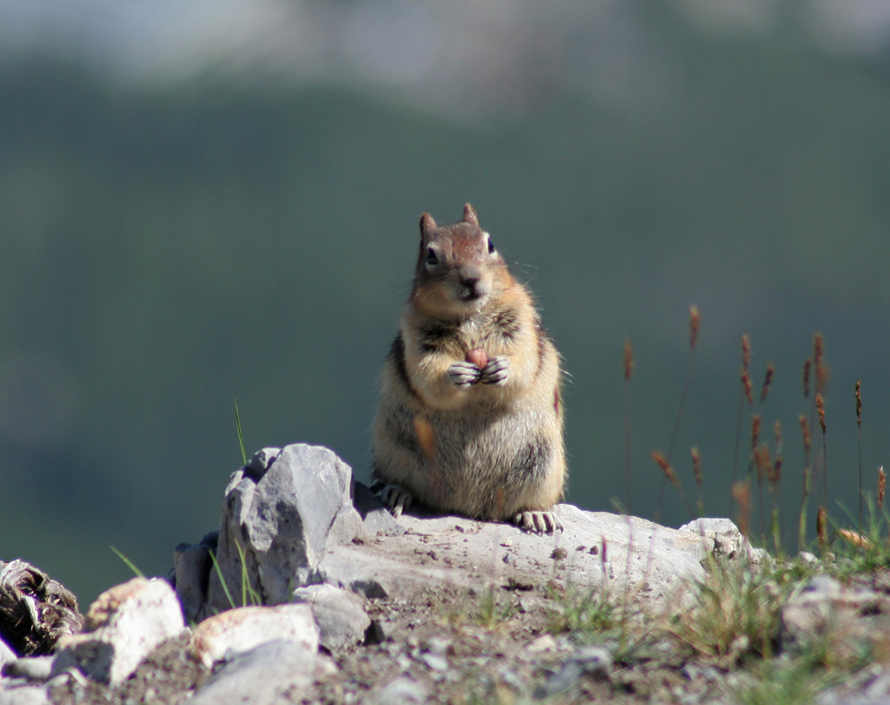
Yoho National Park
Named for the Cree word that means “awe and wonder,” Yoho is the smallest national park in the Canadian Rockies, but packs a punch of scenery on its many well-maintained hiking trails (BC hikers often list Yolo as their favorite park in the Rockies). The tiny mountain-shaded town of Field is the park’s lone outpost; the park center is here along with gas, groceries, a few inns and a cafe.
Explore: Most of the easy-to-access trails are reached via two roads north of Field, the Emerald Lake Road and the Yoho Valley Road. Near the start up the road to Emerald Lake is a must-see geologic wonder, a Natural Bridge created when the Kicking Horse River plowed through solid rock over many thousands of years. Hold the hands of young children as you carefully venture out.
Emerald Lake is, as its name suggests, the color of the beryl gemstone. Kids will love the unique experience of renting a canoe here and paddling around to search for elk, bear and mountain goats on the surrounding slops and cliffs. An easy hiking trail encircles the lake.
Yoho Valley boasts one of Canada’s highest cascades, Takakkaw Falls, which drops 254 meters down a wide rock face. A short, flat trail from the parking area will lead you to the perfect photo op for this plunging cascade. Nearby, an easy hour-long hike leads to the cool water spray of Wapta Falls.
Stay: It’s a major splurge, but the quintessential Banff National Park experience includes a stay at the Fairmont Chateau Lake Louise, originally built in 1890 by the Canadian Pacific Railway as a palace-like inn for its passengers. From $389 CAN nightly.
Camp: Two Jack Lakeside campground sits 12 kilometers northeast of the town of Banff on the Lake Minnewanka Road and accommodates tents (many are scenic walk-in sites) and small RVs. The restrooms have showers ($21.50-$27.40 nightly, reservations at 877-737-3783 or reservation.pc.gc.ca).









